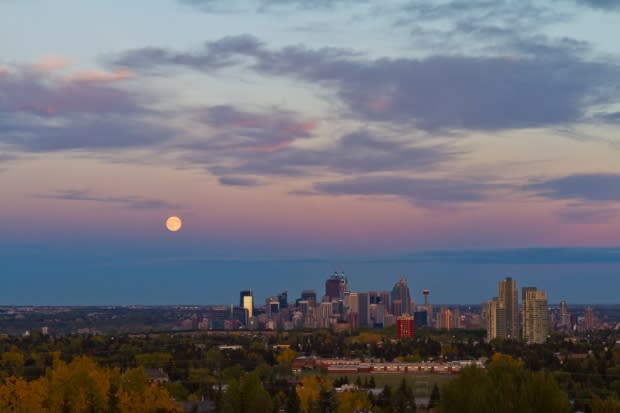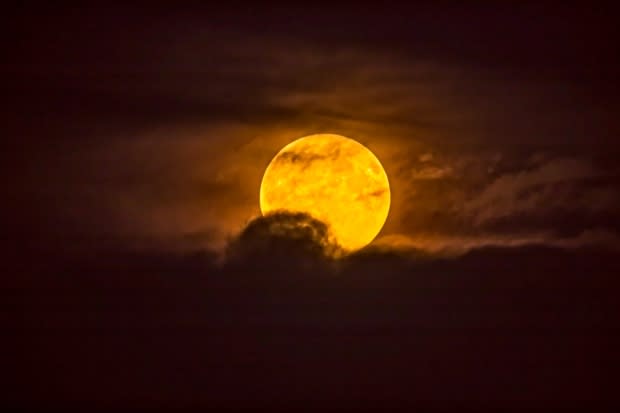Autumn equinox a 'photographic opportunity' for local stargazers
Fall is definitely in the air and with the calendar officially marking the change on the weekend, stargazers have a lot to look forward to as we approach the autumn equinox.
Alan Dyer, astronomy author and photographer, spoke with Doug Dirks on The Homestretch to talk about the upcoming harvest moon.
Q: What exactly is the autumn equinox?
A: The autumn equinox is this Saturday, officially at 7:54 p.m. MT. This is when the summer ends and autumn begins. And at that precise time is when the centre of the sun crosses an imaginary line in the sky called the celestial equator.
It's been north of that equator line for six months. So, it's going south for the winter time.
That puts the sun getting lower and lower in our sky as it has been since the summer solstice, but after this the days get shorter than the nights.
Around the equinox is when we get 12 hours of daylight and 12 hours of night. Thus the term, equinox, equal night — that's where it comes from.

Q: Why does the equinox matter to stargazers?
A: We like to have those longer nights so that we can do some stargazing, but photographically a fun thing to note is around the equinox in September and in March, are the only dates when the sun sets due west and rises due east.
Here in the prairies most of our roads and highways are going east-west, north-south, so it's an opportunity to shoot the setting sun right down the end of a highway or road or rising in the morning, so it's a photographic opportunity.
Q: How does the so-called harvest moon factor into all of this?
A: The harvest moon is officially the full moon closest to the equinox, and this year, the harvest moon is almost on the equinox, three days later on the Monday night. It's the full moon that also rises directly opposite the sun, so if the sun's setting due west, the full moon will be coming up almost due east, so there's another photo-op for you on Monday night, the night of the full moon itself, the harvest moon, or the night before on the Sunday night it's not bad either.
The full moon will be coming up at, or just after, sunset, so you can get a nice shot of the full moon coming up over a road or an east-facing highway.
The harvest moon, unlike a lot of the other full moons of the year, does look a little bit different, always a little bit orange because perhaps there is dust in the air at this time of year. Also it comes up around the same time each night, so we get several nights in a row where we get people who notice the full moon coming up right around 7:30 p.m.

Q: You were in Yellowknife recently taking some amazing photos of the aurora borealis, tell us about that trip?
A: It was fantastic. Yellowknife, only a two hour flight north of here and several flights a day. If you want to see the northern lights, just go there, it's quick and easy to get there but this is a very busy time.
Every hotel room was full.
I booked a couple months ago, but it was filled with tourists [from] around the world, and if the skies are clear you're going to see the northern lights. I was there for all last week, and I could have shot and seen the northern lights every night had I stayed up late enough and driven out far enough.
Q: I've been looking at some of the photos you posted on Twitter, and they almost look photoshopped. Is that really the colour that you see when you're up in Yellowknife?
A: You see the green of the northern lights, and also there were a couple of nights when it was really pink, and that's nitrogen molecules glowing — and it takes a pretty energetic aurora.
The aurora wasn't doing anything special globally, we probably weren't seeing a lot up here, but there it's a nightly occurrence. Even from downtown. I was downtown on a couple of nights and you just look up and there is a big slash of green, but the cameras always do pick up, with a longer exposure, more of the colours than your eye can see.
It's one of the top places in the world to see the northern lights, and it's a big draw.
With files from The Homestretch.

